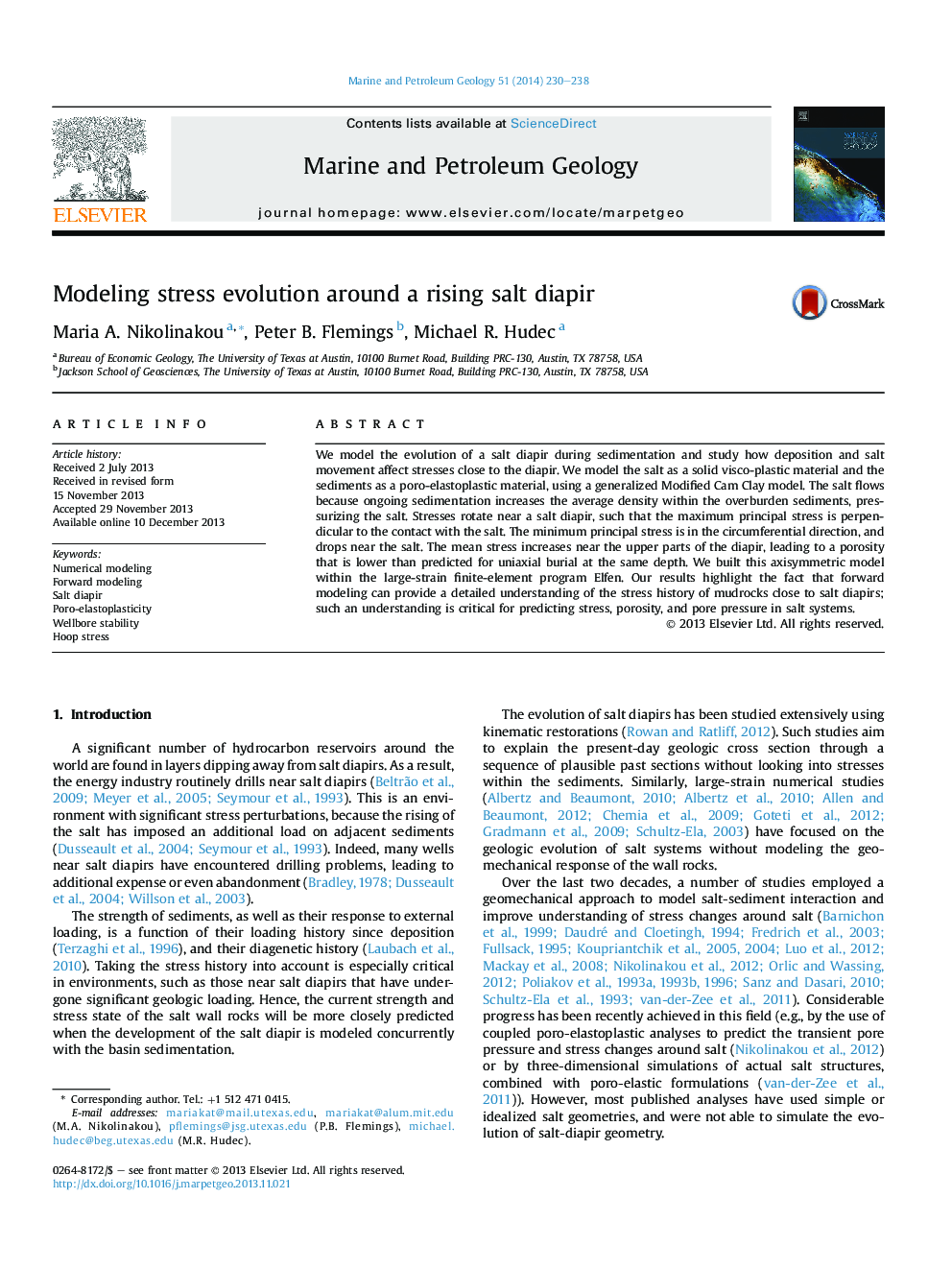| Article ID | Journal | Published Year | Pages | File Type |
|---|---|---|---|---|
| 6435317 | Marine and Petroleum Geology | 2014 | 9 Pages |
:â¢Forward modeling of an axisymmetric salt diapir during sedimentation.â¢Modeling sediments as poro-elastoplastic.â¢Minimum principal stress in the hoop direction and dropping near the salt.â¢Higher probability for wellbore instability and radial faults near rising salt diapirs.â¢Lower sediment porosity near the upper diapir, compared to uniaxial sedimentation.
We model the evolution of a salt diapir during sedimentation and study how deposition and salt movement affect stresses close to the diapir. We model the salt as a solid visco-plastic material and the sediments as a poro-elastoplastic material, using a generalized Modified Cam Clay model. The salt flows because ongoing sedimentation increases the average density within the overburden sediments, pressurizing the salt. Stresses rotate near a salt diapir, such that the maximum principal stress is perpendicular to the contact with the salt. The minimum principal stress is in the circumferential direction, and drops near the salt. The mean stress increases near the upper parts of the diapir, leading to a porosity that is lower than predicted for uniaxial burial at the same depth. We built this axisymmetric model within the large-strain finite-element program Elfen. Our results highlight the fact that forward modeling can provide a detailed understanding of the stress history of mudrocks close to salt diapirs; such an understanding is critical for predicting stress, porosity, and pore pressure in salt systems.
